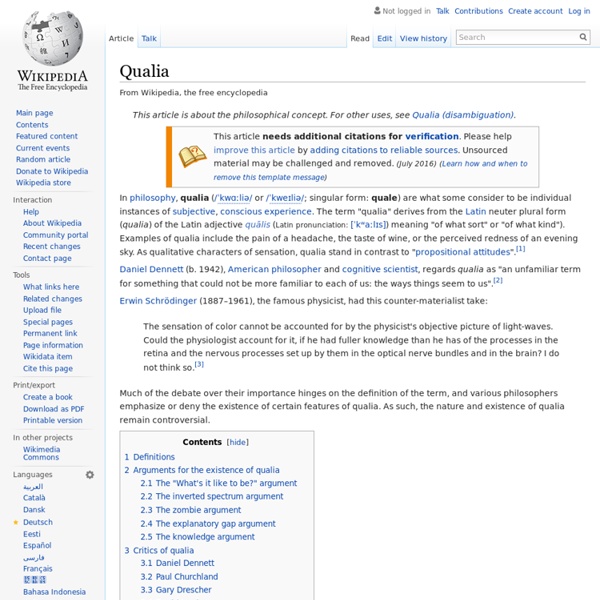Is Consciousness Universal?
For every inside there is an outside, and for every outside there is an inside; though they are different, they go together. —Alan Watts, Man, Nature, and the Nature of Man, 1991 I grew up in a devout and practicing Roman Catholic family with Purzel, a fearless and high-energy dachshund. He, as with all the other, much larger dogs that subsequently accompanied me through life, showed plenty of affection, curiosity, playfulness, aggression, anger, shame and fear. Yet my church teaches that whereas animals, as God's creatures, ought to be treated well, they do not possess an immortal soul. Only humans do.
Nervous system
The nervous system is the part of an animal's body that coordinates its voluntary and involuntary actions and transmits signals between different parts of its body. Nervous tissue first arose in wormlike organisms about 550 to 600 million years ago. In most animal species it consists of two main parts, the central nervous system (CNS) and the peripheral nervous system (PNS). The CNS contains the brain and spinal cord. The PNS consists mainly of nerves, which are enclosed bundles of the long fibers or axons, that connect the CNS to every other part of the body.
Higher-order logic
The term "higher-order logic", abbreviated as HOL, is commonly used to mean higher-order simple predicate logic. Here "simple" indicates that the underlying type theory is simple, not polymorphic or dependent.[1] Quantification scope[edit]
Nuba peoples
For the musical form, see Andalusi nubah or Nuubaat. Nuba man with body painting Nuba is a collective term used here for the peoples who inhabit the Nuba Mountains of South Kordofan state, in Sudan. Although the term is used to describe them as if they composed a single group, the Nuba are multiple distinct peoples and speak different languages. Estimates of the Nuba population vary widely; the Sudanese government estimated that they numbered 1.07 million in 2003.[1] Description[edit]
Japanese Zen Buddhist Philosophy
1. The Meaning of the Term Zen The designation of this school of the Buddha-Way as Zen, which means sitting meditation, is derived from a transliteration of the Chinese word Chán.
Spinal cord
The spinal cord is a long, thin, tubular structure made up of nervous tissue, that extends from the medulla oblongata in the brainstem to the lumbar region of the vertebral column. It encloses the central canal of the spinal cord that contains cerebrospinal fluid. The brain and spinal cord together make up the central nervous system (CNS).
Model theory
This article is about the mathematical discipline. For the informal notion in other parts of mathematics and science, see Mathematical model. Model theory recognises and is intimately concerned with a duality: It examines semantical elements (meaning and truth) by means of syntactical elements (formulas and proofs) of a corresponding language. To quote the first page of Chang and Keisler (1990):[1] universal algebra + logic = model theory. Model theory developed rapidly during the 1990s, and a more modern definition is provided by Wilfrid Hodges (1997):
Homonymous hemianopsia
Hemianopsia or hemianopia is visual field loss on the left or right side of the vertical midline. It can affect one eye but usually affects both eyes. Homonymous hemianopsia, or homonymous hemianopia, is hemianopic visual field loss on the same side of both eyes.
The Art of Living: Vipassana Meditation
The following text is based upon a talk given by Mr. S.N. Goenka in Berne, Switzerland. Everyone seeks peace and harmony, because this is what we lack in our lives.



